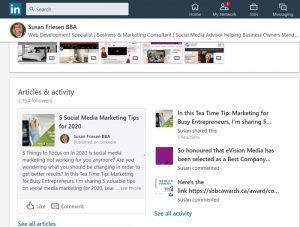
As a prospective client said to me last week, words matter.
She is absolutely correct. Words determine how people respond to your marketing: Whether they read or not… Whether they act or not… And ultimately, whether they buy or not.
Fortunately for marketers, some words are more powerful than others.
And while using these words doesn’t guarantee you complete success, it does increase the likelihood people will do what you want them to.
In fact, I’ve found that there are dozens of words, phrases and copy constructs that marketers can use to get people to notice and respond to their messages. Many of them take advantage of the human tendency to use decision defaults.
“Decision defaults in copy? What exactly are those?”
Well here’s where things get interesting. Social scientists and behavioral economists have proven that people often rely on decision-making shortcuts – automatic, instinctive, reflexive behaviors. Humans have developed these over the millennia as a way to conserve mental energy. We couldn’t possibly weigh every bit of information available to us before making a decision or we’d never get around to making any.
So instead, when we encounter certain situations or stimuli, we default to these hardwired behaviors – giving them little to no thought.
And here’s the beautiful thing. If marketers are aware of the words and copy constructs that can trigger some of these automatic behaviors, we can use them to our advantage. We can tap into a scientifically proven way to persuade.
What follows are eight of my favorite examples.
Understand how surprisingly persuasive the word “because” is
Social scientists have found that people are more likely to do what you ask them to if you give them a reason why. And Harvard University researcher Ellen Langer proved that a powerful way to do this is to use the word because.
In her research, she sent someone to the head of a line of people waiting to use a photocopier. When the person asked to cut in front of the line, 60% of the time they were allowed to.
However, when Langer repeated the experiment and had the person ask if they could cut, but added “because I’m a hurry and have a few copies to make,” 94% of those asked said yes. And when she repeated it a third time and instructed the person asking to simply explain, “because I have a few copies to make” the person was stilled allowed to cut 93%.
Think about it. Everybody standing in that line was there because they had some copies to make. They weren’t waiting at the photocopier for a latte.
Langer’s research identified the word “because” as a compliance trigger. When we hear or see (because we pronounce the words we read in our heads) the word “because” we automatically start to agree without fully processing the words that come next. We just assume there’s a good, logical, rational reason coming.
So marketers should take advantage of the surprising power of the word “because.” Remember, your reason why doesn’t even have to be ironclad. It really just needs to be there. Because once people hit the word “because” they’re not really absorbing the rest of the sentence.

Discover the innate allure of anything new
Social scientists have found that the human brain craves the new and novel. When we find something new, it activates the pleasure center in our brains. That feels good. And, as a result, it sends us out looking for the next new thing.
So marketers can always count on the word “new” – in fact on the entire family of “new” words – to attract attention.
Here’s the best way to use them: Place these words in high-read pieces of real estate such as subject lines, headlines, and captions. These are places where people often enter your content make the decision to read further or not.
So prominently feature “new” or any of the family of “new” words: new, now, announcing, introducing, finally, and soon. The human eye will be drawn to them, and they’ll persuade your target to read further.
If you’re in need of a verb, consider “discover,” which also hints of the new and novel. Plus, it feels like much less work than “learn,” which can take you back to the second grade in Sister Rosemary’s math class when you had to learn the multiplication table but you really wanted to be outside playing kickball.
Offer to fill an information gap
Neuroeconomist George Loewenstein coined the phrase “information gap theory.” What he found is that if there’s a gap between what people know and what they want to know, people will take action to fill that gap.
One of the best ways to set up an information gap is to use a tactic that journalists have relied on for years. In their stories, they’re taught to answer the 5 Ws and the 1 H: who, what, where, when, why and how.
When I was a journalism major at Boston University, it was one of the first things I learned. As a marketer, I now see the powerful implications for getting people to read our messages and our content.
Start your ad headlines, content titles, and subject lines using the words who, what, where, when, why and how. These words will prompt people to keep reading so they can find the answer they don’t know.
One word of caution here: Make sure you pay off what you promise. Don’t persuade someone to read further and then fail to give them what they came for. This will not put your prospect in the mood to receive your message.
Change a word and change your reader’s perspective
Framing can be a powerful persuasion tool for marketers. The words you use and the order in which you use them make a big difference in terms of how people perceive your message and respond to it.
For example, a Cornell University study found that students ate twice as many carrots when the cafeteria renamed them “X-ray Vision Carrots.”
Infomercial copywriter Colleen Szot made exercise equipment sales skyrocket when she reframed the spot’s typical call to action. Instead of saying “Operators are waiting, please call now,” she urged, “If operators are busy, please call again.”
And researcher Elizabeth Loftus proved the power of framing with her experiment using a video of a car accident. She had a group of people watch the video and then asked some of them to estimate how fast the cars were going when they “crashed.” Others were asked how fast the cars were going when they “contacted.”
The people who heard the verb “contacted” estimated the vehicles were traveling 31.8 miles per hour. The group that heard “crashed” estimated 40.8 miles per hour. That’s a full 28% faster! Remember, everyone saw the same video. The way the question was framed drove the difference.
So when writing copy that needs to persuade, frame your message and offer in the way most beneficial to you.

Challenge your reader’s expectations
This next example of a copy construct is one that allows you to double your messaging impact. And as someone who started her career as a copywriter, I also find it to be one of the most interesting techniques.
Researchers at University College London have found that our brains are hardwired to predict what should come next. So as we start to read a sentence, our brains leap ahead and fill in what we expect will follow. And here’s the real cool thing: If the sentence ends differently, our brain absorbs both messages – the one that is there and the one that we heard in our head.
One good example of this I saw recently was in the subject line of an email from a popular clothing retailer. The subject line read: Dressed to chill. However, the common phrase is “dressed to kill,” so that is how the reader would predict the sentence would end.
As a result, the brain receives two messages about the fashions featured in the email: They’re great for lazing around the house when you want to chill. And you’ll look “killer” doing so.
So as a marketer, occasionally surprise your readers by altering the words they predict will come next in a headline or subject line. It can be a savvy way to capture their attention and focus it on your message. And remember, when your readers’ attention is focused, they’re more likely to absorb and recall your message. That makes them more likely to act on it.
Set limits and watch people’s interest increase
People are funny. Oftentimes, we want we cannot have – including some things we’d be less interested in if they were readily available.
In fact, social scientists have proven that people place greater value on things that are scarce. These scientists even created a principle that describes this behavior: the scarcity principle.
Essentially what they discovered is that when something is available only for a certain time, or available only to a certain group of people, that makes us want it – and want it badly.
There are two sides to the scarcity coin: urgency and exclusivity.
To trigger urgency, marketers should use words and phrases such as: now, minutes, limited time, today only, last chance, and only X number remaining — as well as dates and deadlines.
To trigger exclusivity, choose words and phrases such as only, exclusive, especially for (group descriptor), just for you, be the first, and before anyone else.
According to the Email Institute, using the scarcity principle in your subject lines can drive a 22% increase in opening rates.
Speaking of email, Worldata research shows that including a countdown clock in your email can increase your click through rates by 17%. It can be very persuasive to see those seconds rolling by, underscoring how little time you have left. Similarly, Worldata found that emails featuring flash sales versus standard sales prompt an 18-22% lift in opening rates.

Know your targets and name them
I read a bit of trivia once that said if you hand someone a pen and ask them to write something, the first thing most people write is their name.
Frankly, that didn’t surprise me. We’re all more interested in ourselves than anyone else. And what reminds us of ourselves more than our names?
Research indicates you’re more likely to donate to a hurricane relief fund if the first letter of the hurricane’s name matches the first letter of your own. Studies have also proven people are more likely to do a favor for someone if the person asking shares the same first name — or even a similar first name. And data show that we’re more likely to marry someone whose first name starts with the same first letter as ours. The incidence is actually 12% greater than if chance alone were involved.
So what does this mean to marketers? Personalize.
Use your target’s name where it makes sense. It will pull their eyes right in. In fact, Experian found you can get a 23.9% increase in email opening rates just by personalizing the subject line.
Go old school and tell a story
Throughout history, and especially before the written word, stories were how information was transferred. Stories, fables, legends, and parables all played an important role in passing important data from person to person and generation to generation.
Fast-forward to today, and science can explain exactly why stories are so effective. And why marketers can use them to our advantage.
When people deal with facts and figures, it activates Broca’s area and Wernicke’s area, the two parts of the brain where language is processed.
However, when we read or hear a story, something else happens. If we read about someone taking an action, it activates the brain’s motor cortex. If we read about how something smells, it activates the olfactory cortex. And if we read about how something feels, it activates the sensory cortex.
Why is this important? Because neuroscientists have found that the more parts of your brain that are activated, the better you understand and remember information.
Perhaps even more telling is an observation made by Joe Vitale, author of Hypnotic Writing. He explains that stories engage us and allow us to draw our own conclusions. And while we may doubt what someone else (like a marketer) tells us, we rarely argue with our own conclusions.
How’s that for persuasion?!
Choose your words with thought and intention
So clearly, words matter. In marketing, as in Scrabble, some are worth more than others. As you set out to persuade your customers and prospects, write your copy with care. Select the words and copy constructs that are most likely to prompt the automatic responses you seek. And watch your read and response rates soar.
Business & Finance Articles on Business 2 Community(118)
Report Post





